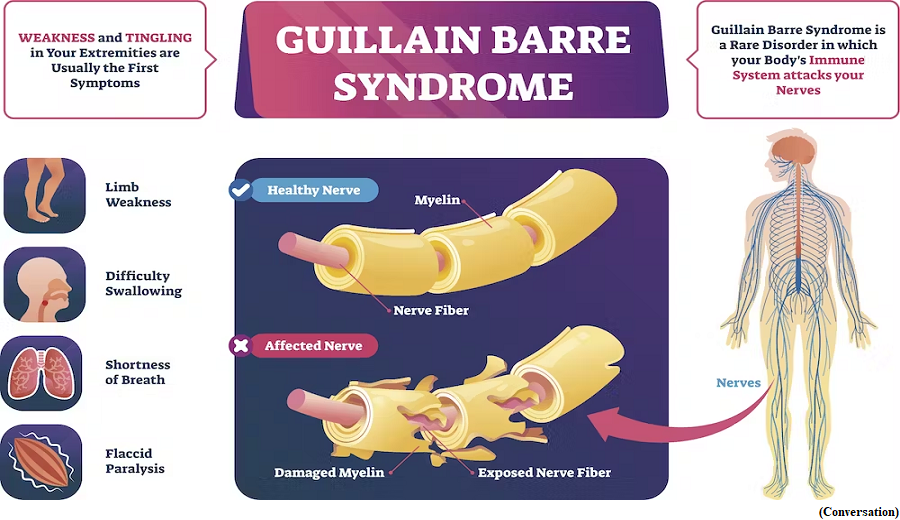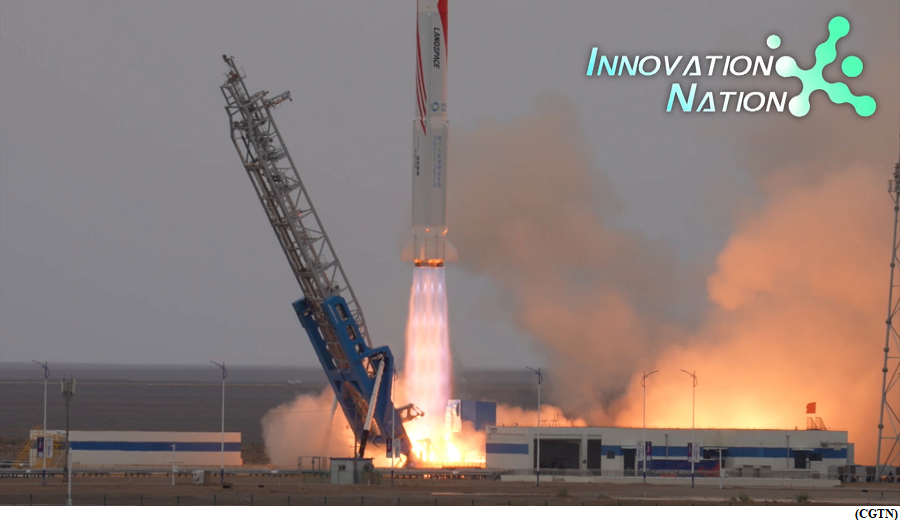Guillain-Barre, What is this neurological disorder and how is it linked to COVID 19 (GS Paper 2, Health)

Why in news?
- A surge in cases of Guillain-Barre Syndrome (GBS) in Peru has brought forward concerns over the links between the novel coronavirus (COVID-19) and the rare neurological disorder.
Details:
- The syndrome was among the prolonged neurological issues, known as long COVID complications, reported around the world following the onset of the COVID-19 pandemic. Scientists have also been looking into the role of COVID-19 vaccines behind GBS cases.
- Peru has declared a 90-day national health emergency as 182 cases have been reported nationwide through June 2023.
What is GBS?
- GBS is a serious autoimmune disorder that attacks the peripheral nervous system and leads to weakness, tingling and numbness initially in the limbs. These can then expand to the rest of the body and eventually cause paralysis, which can last 6-12 months or longer.
- The syndrome can affect the nerves that control muscle movement as well as those that transmit pain, temperature and touch sensations. This can result in muscle weakness and loss of sensation in the legs or arms. While it is more common in adults and in males, people of all ages can be affected.
Transmission:
- The syndrome usually occurs following a bacterial or viral infection or, on rarer occasions, following vaccinations. People who develop GBS do so several days or weeks after they have been sick with diarrhoea or a respiratory illness, according to the United States Centers for Disease Control and Prevention.
- Patients with Epstein-Barr, Zika, human immunodeficiency virus (HIV), Herpes and Campylobacter jejuni have displayed GBS symptoms in the past.
- After the onset of the COVID-19 pandemic, several cases of GBS following infections with SARS-CoV-2 were reported around the world.
Treatment options:
- While there is no known cure for GBS, treatments are available that can reduce the severity of the illness and speed up recovery.
- The most commonly used treatment is intravenous immunoglobulin (IVIG), which is made from donated blood that contains healthy antibodies. This helps calm down the immune system's attack on the nerves.
- Another treatment option is plasma exchange, a procedure that filters the liquid part of your blood, removing the harmful antibodies attacking the nerves.
Is there a vaccine against GBS?
- No, there isn't. Since vaccines have an effect on the immune system, immunisations may be associated with subsequent GBS.
China launched 1st methane powered rocket to space
(GS Paper 3, Science and Technology)
Why in news?
- Recently, a private company in China has launched the world's first methane-liquid oxygen rocket.
- The move helps China beat rivals like the US, India, and Europe in developing the next-generation launch vehicle that could carry payloads into orbit around Earth.

Details:
- The Zhuque-2 carrier rocket blasted off from the Jiuquan Satellite Launch Center in northwest China.
- This was the second attempt by Beijing-based LandSpace, one of the earliest firms in China's commercial launch sector, to launch the Zhuque-2.
- The rocket successfully delivered a test payload into sun-synchronous orbit (SSO), making it the first in the world to achieve such a milestone.
Methalox:
- A methane-powered rocket, also known as Methalox, uses methane as the fuel and liquid oxygen (LOX) as the oxidizer.
- It operates based on the same principles as traditional launch vehicles but differs in terms of propellant choice and certain design considerations.
- Methane and liquid oxygen are the propellants used in a methane-liquid oxygen rocket. Methane is a hydrocarbon fuel that can be produced from various sources, including natural gas.
- It offers several advantages as a rocket fuel, such as high energy density, good combustion characteristics, and availability.
Background:
- LandSpace also became the second private Chinese company to launch a liquid-propellant rocket.
- In April, Beijing Tianbing Technology successfully launched a kerosene-oxygen rocket, taking another step towards developing rockets that can be refueled and reused.
Why methane?
- Methane is considered less polluting, safer, cheaper, and a suitable propellant for reusable rockets.
- The key differences between methane-liquid oxygen rockets and traditional launch vehicles lie in the propellant choice and performance characteristics.
- However, traditional launch vehicles using other propellant combinations have a long history of operational experience, established infrastructure, and reliability.



